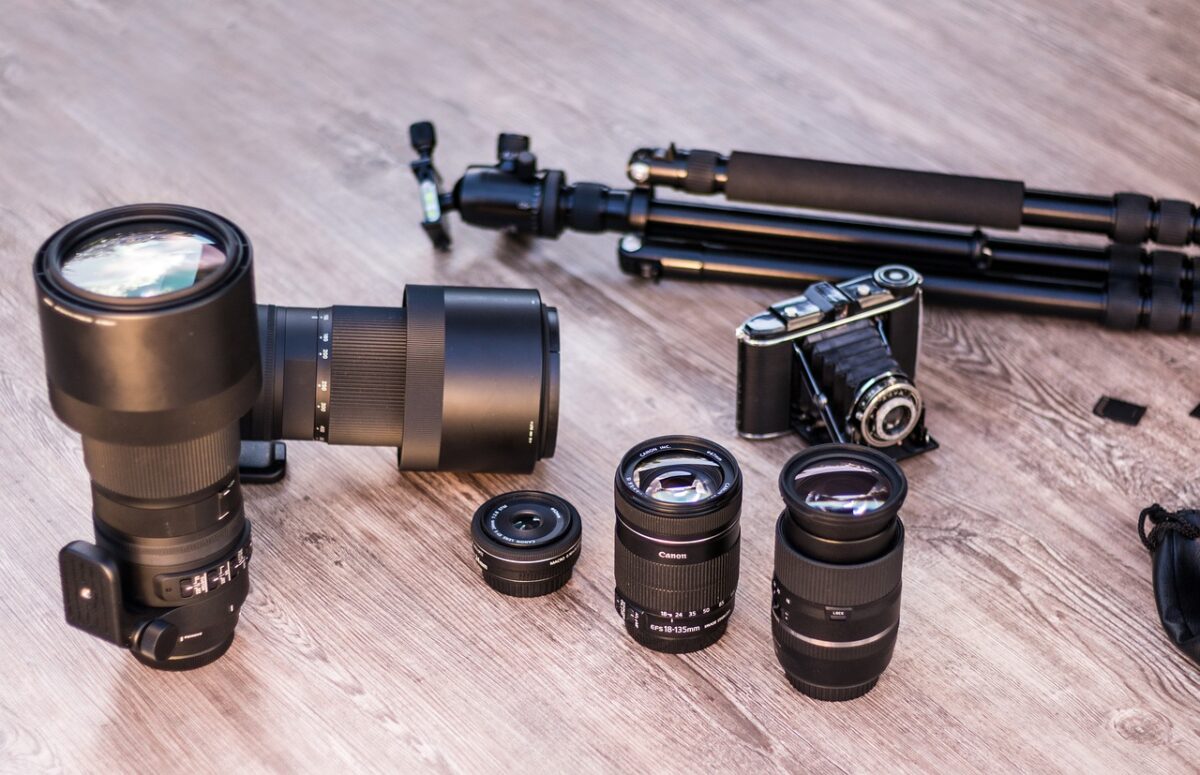
As an Amazon Associate we earn from qualifying purchases.
Although the 20mm and the 24mm lenses are wide-angle lenses suitable for landscape and real estate, they perform differently in varying shooting situations. The following 20mm vs 24mm guide helps you understand each lens's strengths and weaknesses, allowing you to make a knowledgeable choice between the lenses.
Quick Navigation
The focal length of the lenses makes them fall under three basic types of lenses: telephoto, normal, and wide-angle. The 20mm and 24mm focal lengths are in the wide-angle category. These lenses provide a longer vertical and horizontal scope between the lens and the subject than the other lenses.

The 20mm lens is versatile and can shoot more exaggerated elements in your scene due to its wide field of view. There are a variety of 20mm lenses that come with different maximum apertures and specifications, such as vibration reduction systems.
|
Brand:
Nikon 20mm f/1.8
|
Brand:
Sigma 20mm F1.4
|
Brand:
Sony FE 20mm F1.8 G
|
|
Lens Type:
Wide Angle
|
Lens Type:
Standard
|
Lens Type:
Standard
|
|
Compatible Mountings:
Nikon Z
|
Compatible Mountings:
Canon EF
|
Compatible Mountings:
Sony E
|
|
Primary Rating:
4.9
|
Primary Rating:
4.5
|
Primary Rating:
4.8
|
A 24mm lens is a popular choice for shooting wide scenes such as mountain ranges, exterior pictures of the property, and epic city skyline scenes. Like the 20mm lens, the 24 mm lens is commonly available as a prime with a wide maximum aperture.
|
Brand:
Sony E-mount FE 24mm
|
Brand:
Nikon NIKKOR Z 24mm f/1
|
Brand:
Sigma 24mm f/1.4
|
|
Compatible Mountings:
Sony E
|
Compatible Mountings:
Nikon Z
|
Compatible Mountings:
Canon EF
|
|
Lens Type:
Wide Angle
|
Lens Type:
Wide Angle
|
Lens Type:
Wide Angle
|
|
Primary Rating:
4.7
|
Primary Rating:
4.6
|
Primary Rating:
4.4
|
Although the two lenses might appear similar when you look at them at a glance, they share some differences and similarities in their performance and usage. Usually, this results from the 4mm difference in angle of view.
The 20mm and 24mm lenses perform excellently, especially when shooting wide-angle images. These lenses' wider field of view makes them have the following things in common.
Although both the 20mm and 24mm lenses are wide-angle lenses, they have differences in their angle of view, making each lens unique and suitable for certain conditions.
The depth of field refers to the area within an image that is in focus. The main factors determining this are the aperture, the focal length, and the distance to the subject. In a shallow depth of field, the image will appear blurry on the parts that are not in focus.
Normally, the size of the focal length determines the depth of field in such a way that the shorter the focal length, the deeper the depth of field. This is because the shorter focal length squeezes more details to fit in the small camera sensor.
If you use a Sony FE 20 mm you will get a deeper field depth than the Sony FE 24mm lens. Note that the f-number is one of the things that affect the depth of field. A lens with a wider maximum aperture might produce photos with a shallower depth of field, even if the angle of view is wide.
Camera shake is typically the accidental shaking of a camera that happens during shooting, especially when you are shooting without a tripod, resulting in blurry images. Normally, the camera shake comes as a result of low shutter speed.
Generally, the shutter speed is supposed to double the f-number of your lens or more. For instance, with the 20mm lens, the shutter speed should be 1/20th sec or more, while 1/24th sec on the 24mm. The 24mm lens appears to have a slower shutter speed resulting in a slight camera shake.
Remember that some lenses come with a built-in vibration reduction system that helps compensate for these accidental vibrations. If both the 20mm and 24 mm lenses come equipped with such a system, you might not notice the difference in image sharpness between the lenses.

The major distinguishing factor between the 20mm and 24mm lenses is the field of view. The field of view (FOV) is the maximum observable area that your eye can see through an optical device. FOV is the maximum area the camera can capture, usually the area that appears on the camera's viewfinder or the display screen.
Normally, the f-number of a lens is one of the major factors that determines the field of view. Unlike how many people think, a short focal length results in a wider field of view. On the other hand, a longer focal length results in a narrower field of view.
Although the 20mm and 24mm give a wide field of view, the field of view of the 20mm lens is wider. The 20mm unit gives a diagonal FOV of 94.5 degrees when mounted on a full-frame camera, while the 24mm unit gives a diagonal FOV of 84.1 degrees when mounted on the same camera.
As you can tell, the 20mm lens can view a wider scene than its 24mm counterpart, making it ideal for use in the following scenarios.
Although the 24mm unit has a wide-angle perspective when you pair it with a full-frame camera, the FOV is relatively narrower, making the unit ideal for use in the following instances.

Generally, the 24mm lens might suit you best because it is versatile and readily available. For instance, the 24mm unit comes as a kit lens for most modern cameras, relieving you of the hassle of buying it separately.
You can pair it with a full-frame camera for wide-angle perspectives and an APS-C camera for normal perspectives when shooting portraits.
The size of a normal lens, also known as a standard lens, has a focal length that lies between 35mm and 50mm. Normally, the normal lenses give a FOV similar to the human eye, which makes them ideal for cinematographers who use them to capture naturalistic footage.
Normally, telephoto lenses are ideal for long-distance footage because they are designed with longer focal lengths, making them capable of bringing distant subjects closer. Like the wide-angle lenses, the telephoto lenses come in both zoom and prime.
Normally, it is advisable that you use polarizers with lenses that have a focal length of around 20 mm and above. The polarizers are circular and are designed to block light in a certain plane which might not be suitable for smaller focal length lenses because they might prevent the camera sensor from getting enough light.
From the above 20mm vs 24mm contrast, you can see the 24mm lens is more versatile and suitable for a wider range of conditions compared to the 20mm unit. However, when taking wide-angle photos, the 20mm wins due to its wider angle of view.
